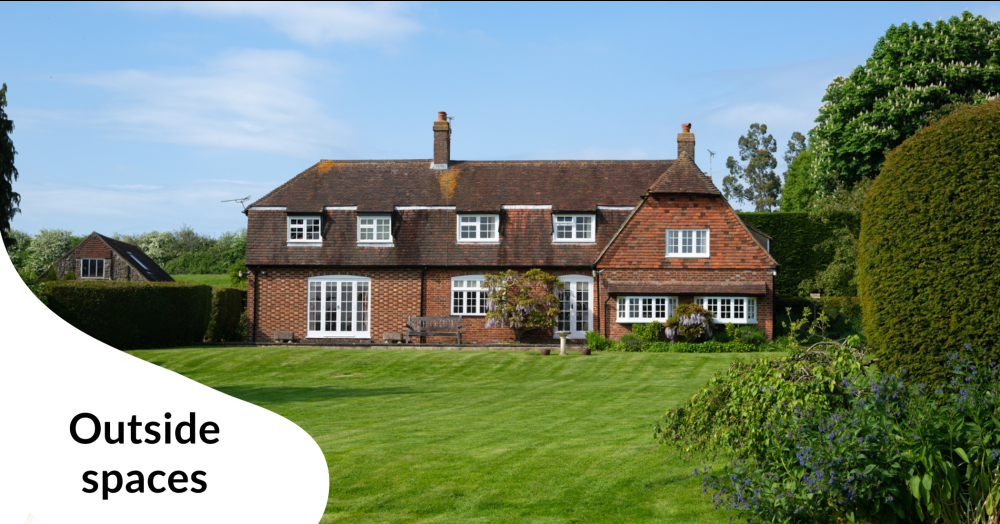There are strengthening desires to transform our green spaces from maintained lawns to places that nature can thrive rather than survive. Swapping grass for wildflowers has never been more popular, here's everything you need to know about inviting wildlife back into your gardens.
Wildflowers bursting back on the scene
As we draw away from ‘No Mow May’, those who have a property with a garden will be returning to their faithful mowers to cut back the growth that maintained wildlife habitat for the course of the month. As bugs made homes and spaces became feeding grounds for larger animals such as birds, May is seen by many as a time to hold back on the stark and short grass areas, allowing nature to take over for a little while.
More and more people though, in their quest to give wildlife a chance to thrive are turning their green spaces into sanctuaries for bugs and insects, and allowing wildflowers that are beginning to diminish from nature to grow back and stand a fighting chance once more. The most common plants recorded during last year’s No Mow May included daisies, white clovers, dandelions and creeping buttercups.
Encouraging growth, not threat
Nicola Hutchinson, the director of conservation at Plantlife, said: “Wild plants and fungi are the foundation of life and shape the world we live in. However, one in five British wildflowers is under threat and we need to urgently address and arrest the losses.”
Plantlife also said mowing the lawn less could help
reduce the carbon footprint of British gardens. The charity estimated that Britain’s lawns could be cut as many as 30 million times a year under a weekly regime. This would be equivalent to the consumption of 45 million litres of petrol, resulting in 80,000 tonnes of annual carbon dioxide emissions – or the combined carbon footprint of about 10,000 average households. With an estimated 23 million gardens in the UK, it’s easy to see how the importance of creating spaces for wild plants and other wildlife is important to our wild communities, for the climate, and for nature.
How easy is it to transform my green space?
The easiest way to create a wildflower space is to simply allow your grass to grow, and where wildflowers are already present, they will be able to grow further and spread. Another option would be to plant bulbs in your lawn which will create a flower-rich lawn, or sprinkle wildflower seeds down in an effort to allow a diverse blend of flowers to bloom.
You can lay down wildflower turf, as long as the soil is workable. Many find autumn to be a good time for this as the soil is usually fairly warm from the summer, and any flowers are directing their energies back into the roots rather than flowering. In the warmer weather, you can expect wildflowers to start growing after 4 or 5 weeks, by which time, wildlife will have begun to really build in your specified area. These areas will also encourage our fuzzy pollinators, the bees, who help plants grow, breed and produce food as vital additions to our ecosystems.
Kent’s Box ‘Blight’
Common box plants (Buxus sempervirens) are evergreen shrubs, with small and rich green leaves. They grow well in a wide range of soils, and are used effectively to box in green spaces. You may have some in your own garden, or at least know somebody who does, and these plants can become infected by what is known as ‘Box blight.’
Becoming more of an issue, particularly in East Kent, box blight is usually caused by Cylindrocladium buxicola or Pseudonectria buxi, both fungal infections making the leaves turn brown or grey, pink or bronze and causing dieback of the Buxus stems, in ideal conditions of warmth and moisture hedges and topiary specimens can spread quickly and can cause real issues.
If you want to include box plants in your green spaces, it is well worth avoiding long hedges where the blight can spread from one plant to another.
You can help to avoid box blight by:
- Making sure your tools are clean – regularly clean as you move along a hedge or when you move between plants
- Use a light weight mulch like Strulch or Topbuxus Carpet to reduce splash and keep any fallen leaves covered – mulching can reduce box blight spreading by 97%
- Make sure your plants have enough air flow through them by regularly thinning them and avoid too many plants growing close and reducing the air flow
Utilize your green space
There has never been a better time to take into consideration all the good a slight transformation of your lawn can do for the wider natural community. Allowing enchanting colours to crop up and attract wildlife has only positive rewards for nature, and as it stands, this is something we are in need of now more than ever.





